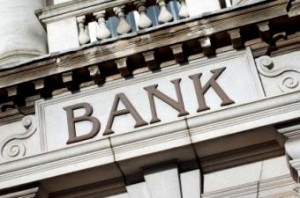 The U.S. banking industry's period of recovery and release have come to a close and significantly higher credit costs lie ahead which will indeed affect these institutions' first quarter earnings.
The U.S. banking industry's period of recovery and release have come to a close and significantly higher credit costs lie ahead which will indeed affect these institutions' first quarter earnings.
Fourth quarter 2015 data from the banking industry showed that the Kroll Bond Rating Agency (KBRA) was right about their previous predictions that the period of recovery and reserve releases ended for U.S. banks last year.
As banks enter the first quarter of 2016, the agency says that the industry is entering a more normal period of building loan reserve levels for future losses, which suggests that significantly higher credit costs lie ahead.
"The era of virtuous performance of bank credit exposures almost perfectly coincides with the period of credit spread compression engineered by the Federal Open Market Committee (FOMC), begging the question as to whether we now face a sustained period of rising bank credit costs," KBRA stated. "Provisions for loan losses exceeded charge-offs for the first time in six years at the end of 2015. KBRA expects to see continued increases in charge-offs and bank loan loss provisions as the year unfolds."
According to the agency, the real estate industry may see increased incidence of charge-offs and non-current loans, but overall loan performance is projected to do well at banks. "It may be inevitable for bank credit costs to rise in the wake of the end of QE, but we do not expect that these increased credit costs will translate into lower credit ratings for banks in our coverage universe regardless of size," the report stated.
KBRA noted that loans secured by real estate of all asset types increased by 4.9 percent in Q4 2015, with construction and development lending leading these gains. The report noted, "real estate credit conditions have been strong over the past few years, but face headwinds. In this regard, it is important for investors to understand that the performance of bank portfolios and similar asset-backed securities (ABS) asset classes are quite disparate and can even show negative correlations through the credit cycle."
Click here to view the full report.

 DSNews The homepage of the servicing industry
DSNews The homepage of the servicing industry










